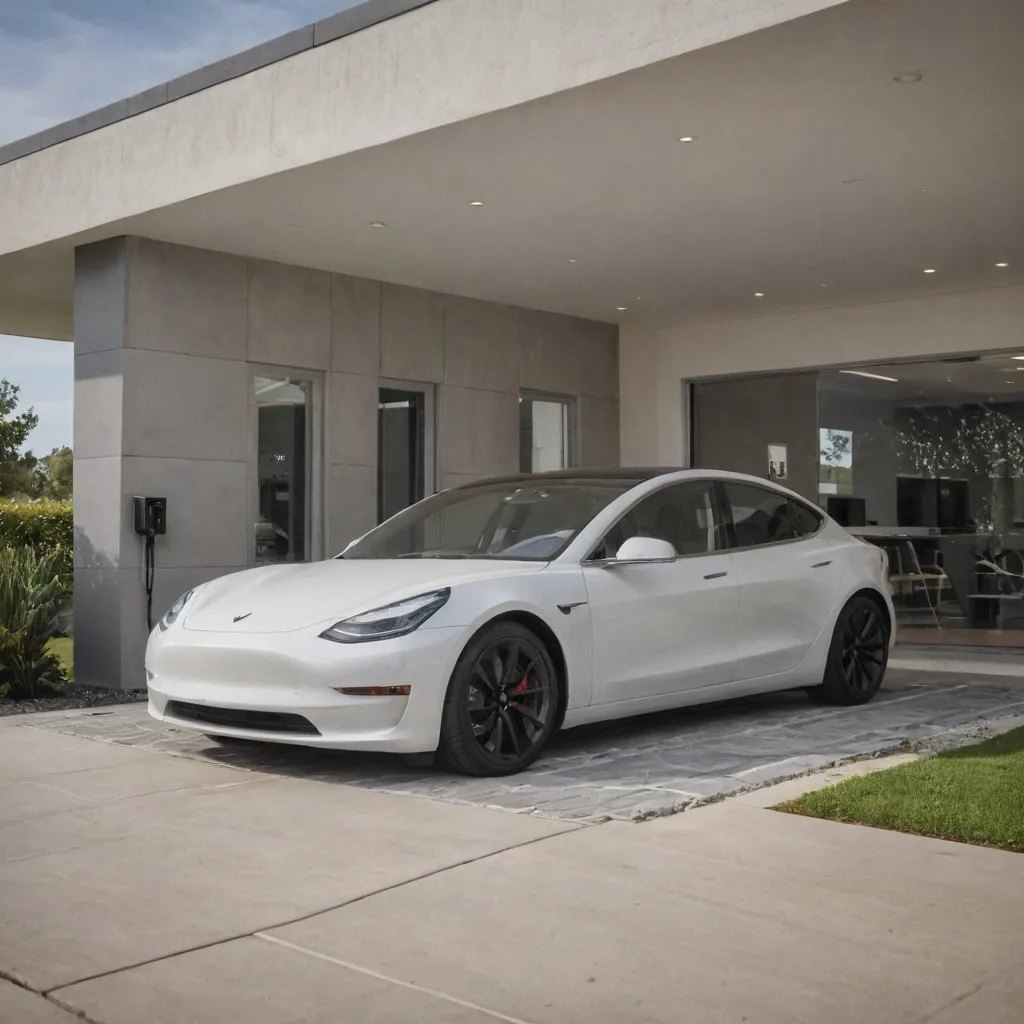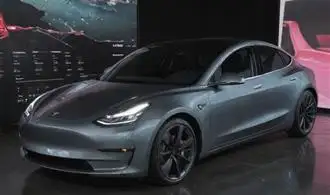
Understanding Tesla Model 3's Charging Capabilities
The Tesla Model 3 is renowned for its impressive range and efficient charging capabilities. However, there are several nuances and details about its charging system that many owners may not be aware of. Delving into the technical aspects, the Model 3 utilizes a lithium-ion battery pack with a capacity ranging from 50 kWh to 82 kWh, depending on the specific variant. This battery pack is designed to be charged through a variety of methods, each with its own unique advantages and considerations.
One of the most crucial factors in understanding the Model 3's charging capabilities is the onboard charger. This component plays a pivotal role in determining the maximum power input the vehicle can accept during charging. The standard Model 3 comes equipped with a 48-amp onboard charger, capable of handling up to 11.5 kW of power input. However, Tesla also offers an optional upgrade to a 72-amp onboard charger, allowing for up to 19.2 kW of power input. This higher-capacity charger can significantly reduce charging times, particularly when using high-powered Level 2 charging stations.
The location and type of charging infrastructure also have a significant impact on the charging experience. Tesla has developed a robust network of Supercharger stations, which are designed to provide rapid charging capabilities. At a Supercharger, the Model 3 can add up to 175 miles of range in as little as 15 minutes, thanks to the vehicle's ability to accept up to 250 kW of power input. This level of charging power is unmatched by most other electric vehicles on the market.
In addition to the Supercharger network, the Model 3 can also be charged using Level 2 charging stations, which are commonly found in public, workplace, and residential settings. These chargers typically provide between 6 kW and 19.2 kW of power input, allowing the Model 3 to charge significantly faster than a standard household outlet. The charging speed at a Level 2 station is directly tied to the onboard charger's capabilities, with the 72-amp upgrade providing the most efficient and rapid charging experience.
It's important to note that the Tesla Model 3's charging capabilities are not limited to high-powered charging stations. The vehicle can also be charged using a standard 120V household outlet, known as Level 1 charging. While this method is the slowest, it can be a convenient option for owners who do not have access to dedicated charging infrastructure or for overnight charging when the vehicle is not in use.
Optimizing Charging Times for Maximum Efficiency
Maximizing the efficiency of your Tesla Model 3's charging process is crucial for getting the most out of your vehicle. One of the key factors in this optimization is understanding and adjusting the charging times. By leveraging various techniques and strategies, you can ensure your Model 3 is charged quickly and effectively, minimizing downtime and energy consumption.
Firstly, it's important to recognize that the charging speed of your Tesla Model 3 can be influenced by a variety of factors, including the type of charger you're using, the state of charge (SOC) of your battery, and the ambient temperature. Level 2 chargers, for instance, offer significantly faster charging speeds compared to standard household outlets, allowing you to replenish your battery more rapidly.
- Utilize the Tesla mobile app or in-car touchscreen to monitor your charging progress and adjust charging schedules accordingly. This allows you to take advantage of off-peak electricity rates, ensuring cost-effective and efficient charging.
- Whenever possible, charge your Tesla Model 3 using a Level 2 charger. These chargers can provide up to 44 miles of range per hour, dramatically reducing the time required to fully charge your vehicle.
- Be mindful of your battery's state of charge. Charging from a lower SOC (e.g., 10-20%) to a higher SOC (e.g., 80-90%) can be more efficient than charging from a higher SOC to a lower SOC. This is due to the Tesla's battery management system, which adjusts charging rates based on the battery's current state.
- Ambient temperature can also impact charging times. Ideally, charge your Tesla Model 3 in a temperate environment, as extreme hot or cold conditions can slow down the charging process. If possible, charge your vehicle in a garage or other sheltered area to maintain a more consistent temperature.
- Consider investing in a smart home charger or an energy management system. These advanced solutions can optimize your charging schedules, taking into account factors like electricity rates, battery health, and your driving patterns to ensure the most efficient charging experience.
Accessing Charging Stations Across the Globe
As the popularity of electric vehicles continues to rise, Tesla's Model 3 has become a game-changer in the industry. One of the key considerations for Model 3 owners is the accessibility of charging stations worldwide. Tesla has made significant strides in expanding its global Supercharger network, but it's essential to understand the broader landscape of charging options beyond Tesla's proprietary system.
The Model 3 is equipped with a universal charging port, allowing owners to utilize a wide range of public and private charging stations. Many countries have invested heavily in building out their charging infrastructure, making it easier than ever for Model 3 owners to keep their vehicles powered up during their travels.
In North America, the network of charging stations is extensive, with various providers such as ChargePoint, Electrify America, and EVgo offering convenient access points. These networks often integrate with mobile apps, allowing users to locate, reserve, and pay for charging sessions seamlessly.
Across Europe, the charging landscape is equally robust, with countries like the Netherlands, Norway, and Germany leading the way in the deployment of public charging stations. Many shopping malls, hotels, and other commercial establishments have also installed charging facilities to cater to the growing number of electric vehicle owners.
Asia, too, has witnessed a significant expansion of charging infrastructure, particularly in countries like China and Japan. China, in particular, has made remarkable progress, with a vast network of both public and private charging stations available to Tesla owners.
One of the unique features of the Model 3 is its ability to adapt to different charging standards. While the car is primarily designed to work with Tesla's Supercharger network, it can also utilize the more widely adopted Type 2 and CCS charging connectors. This flexibility allows Model 3 owners to access a broader range of charging options, making long-distance travel and international trips more seamless.
Furthermore, the Model 3's range and charging capabilities have continued to improve, with newer models offering even greater driving distances and faster charging times. This, combined with the expanding global charging network, has made the Model 3 an increasingly attractive option for those seeking a sustainable and convenient electric vehicle solution.
Maximizing Battery Life Through Proper Charging Techniques
Charging your Tesla Model 3 correctly is essential for maintaining the health and longevity of its battery. Improper charging practices can lead to decreased battery capacity and reduced overall lifespan. In this section, we'll explore the key techniques you can employ to maximize your battery's life.
Firstly, it's important to understand the different charging modes available for the Tesla Model 3. The car offers both standard charging and fast charging options. Standard charging, using a Level 1 or Level 2 charger, is generally slower but kinder to the battery. Fast charging, on the other hand, can be more convenient but may have a greater impact on battery degradation over time.
When it comes to daily charging, it's recommended to stick to standard charging whenever possible. This allows the battery to charge at a slower, more gradual rate, which helps preserve its long-term health. Avoid regularly relying on fast charging unless it's absolutely necessary, as the higher currents and temperatures associated with fast charging can accelerate battery wear and tear.
Another crucial factor in maximizing battery life is maintaining the optimal charging range. It's generally recommended to keep your Tesla Model 3's battery between 20% and 80% charge. Repeatedly charging the battery to 100% or letting it drain to 0% can be detrimental to its longevity. Try to establish a routine where you charge the car to around 80% before your daily commute and top it up as needed.
Additionally, be mindful of the ambient temperature when charging your Tesla Model 3. Extreme temperatures, both hot and cold, can have a negative impact on the battery. If possible, charge your car in a climate-controlled environment, such as a garage, to ensure optimal conditions for the battery.
Integrating Home Charging Solutions for Convenience
When it comes to charging your Tesla Model 3, having a reliable and convenient home charging solution is essential. While the default Level 1 charging from a standard household outlet is an option, upgrading to a dedicated Level 2 home charger can significantly enhance the charging experience and make your daily routine more seamless. Here are some key considerations when integrating home charging solutions for your Tesla Model 3:
Electrical Capacity and Upgrades: Ensure your home's electrical system can handle the additional load of a Level 2 charger. This may require upgrading your home's electrical panel or adding a dedicated circuit. Consulting a licensed electrician is highly recommended to determine the necessary electrical work and ensure compliance with local codes.
Charging Station Installation: The installation of a Level 2 charging station, whether a wall-mounted unit or a freestanding pedestal, requires careful planning and execution. The location should be convenient, accessible, and close to your Tesla's parking spot. Consider factors such as cable length, mounting options, and any necessary permits or approvals from your homeowner's association or local authorities.
Charging Speed and Performance: Level 2 chargers typically provide a charging speed of 240V, delivering up to 9.6 kW of power. This can significantly reduce your charging times compared to the standard Level 1 option. Understand your Tesla Model 3's charging capabilities and choose a compatible Level 2 charger that can optimize the charging experience.
Smart Charging Features: Many modern Level 2 chargers offer advanced features that can enhance the convenience and efficiency of your home charging experience. Look for chargers with Wi-Fi connectivity, mobile app integration, and smart scheduling capabilities. These features allow you to monitor your charging status, adjust charging schedules, and even take advantage of off-peak electricity rates.
Cost Considerations: While the initial investment in a Level 2 home charger may be higher than the Level 1 option, the long-term benefits can outweigh the costs. Consider any available federal, state, or local incentives or rebates that can help offset the installation and equipment expenses. Additionally, factor in the potential energy cost savings from the faster charging speeds and the increased convenience of having a dedicated home charging solution.
















